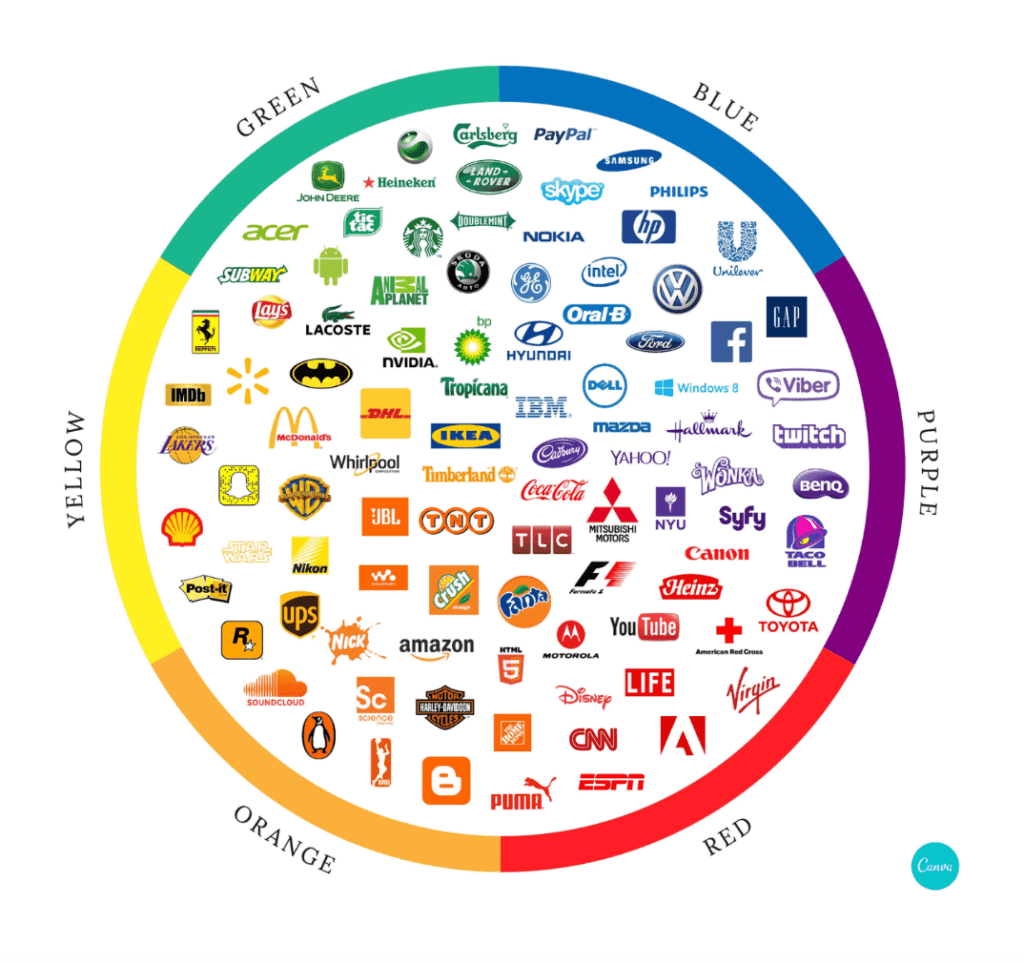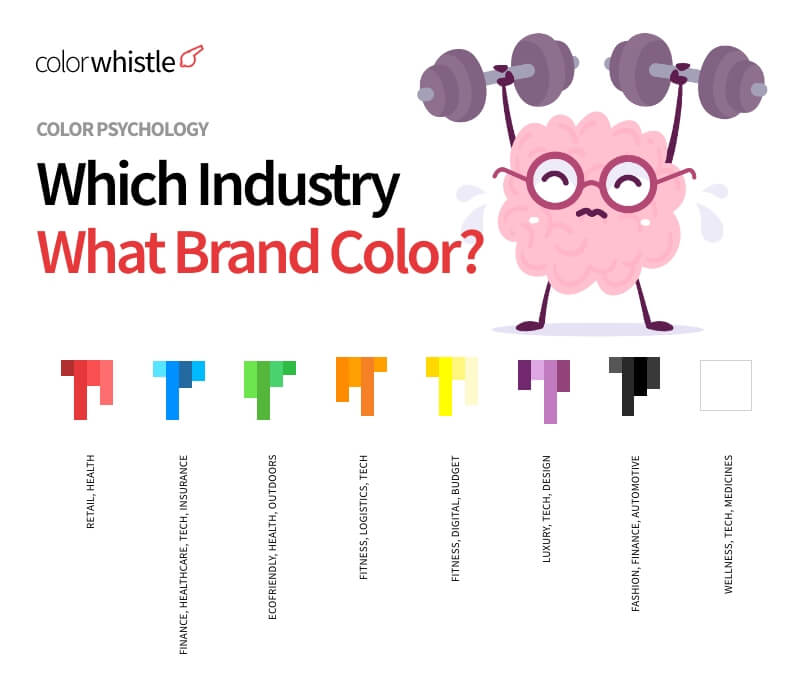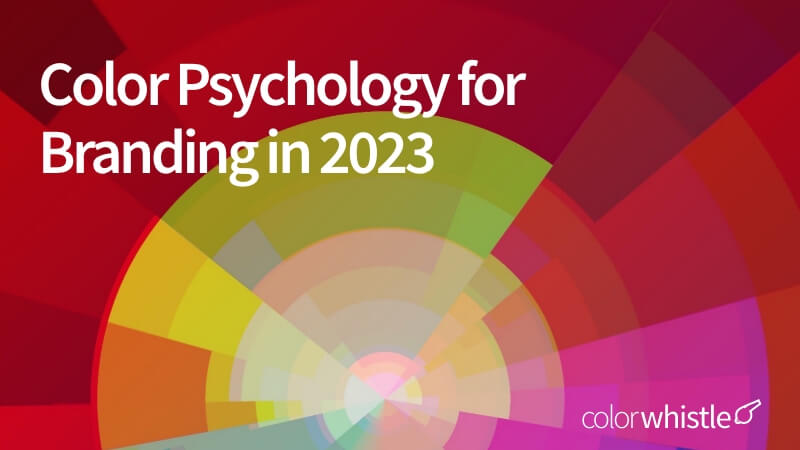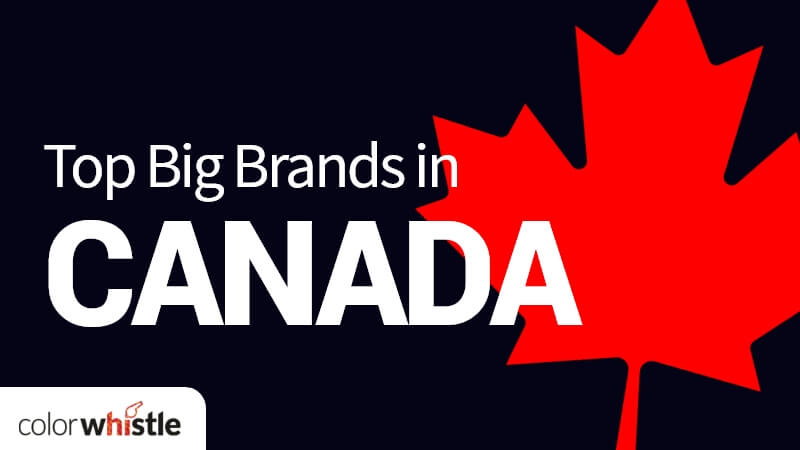46% of consumers will pay more for trusted brands
55% of brand first impressions are visual
Color increases brand recognition by up to 80%
As the world of marketing and business continues to evolve, so will branding strategies. Over time, a business’s brand has become its lifeblood – manifesting in all areas from website design and marketing campaigns to customer interaction styles.

With technology continuing to expand into our lives, understanding how customers perceive your brand is becoming even more vital to success in 2024.
One way companies are doing this? Utilizing color psychology when making decisions regarding their brand’s identity. Incorporating the right hues can increase customer recognition while successfully conveying a businesses message – meaning that whether you’re starting out or revamping an existing brand, learning how to utilize color psychology with intention may be essential for maintaining relevance well into the future.
Also Read
Brand Colors and its Importance
Color psychology is the study of how colors affect human behavior and emotions. In branding, the use of color can play a big role in creating an image and emotions associated with a brand. Here are some common associations with colors:
- Red: Passion, excitement, energy, strength, and love
- Orange: Cheerfulness, warmth, and friendliness
- Yellow: Optimism, happiness, and playfulness
- Green: Growth, nature, health, and wealth
- Blue: Trust, reliability, and calmness
- Purple: Creativity, luxury, and mystery
- Black: Sophistication, elegance, and power
- White: Purity, innocence, and peace
Its necessary that we keep in mind that cultural and individual differences can impact the interpretation of colors. Additionally, the tone and saturation of the color can also impact its perceived emotions and meanings. It’s important to choose a color scheme that fits the brand’s personality and resonates with the target audience.

Orange – Inviting, Excitement & Comfort
Orange is a bright and vibrant color that is often associated with excitement, enthusiasm, and warmth. In color psychology, orange is seen as a combination of the energy and happiness of yellow with the stability and comfort of red. As a result, it is often associated with positivity, confidence, and playfulness.
In certain cultures, orange may also be seen as a warm and inviting color, representing hospitality, friendliness, and comfort. On the other hand, an over-saturation of orange may evoke feelings of stress, frustration, or anger. In design and marketing, orange is often used to grab attention and create a sense of urgency.
Industries that can opt for orange in their branding: Fitness, Logistics, Tech.
Red – Passion, Energy & Strength
Red is often associated with strong emotions and is considered a high-impact color. In color psychology, the color red is often associated with the following meanings and emotions.
In branding and marketing, red can be a highly effective color, but it’s important to use it in moderation and in the right context. Too much red can be overwhelming and may evoke negative emotions such as anger or anxiety.
It’s also important to consider the cultural and individual differences in the interpretation of red, as the color can have different meanings in different cultures and contexts.
Industries that can opt for red in their branding: Retail, Health.
Blue – Powerful Emotions, Peace, Tranquility
Did you know that the color blue can have a powerful effect on our emotions? It is often associated with feelings of trust, loyalty, and sincerity – qualities we value highly in relationships.
Blue helps to create an atmosphere of calmness while also increasing productivity as it encourages clear communication and problem-solving abilities.
Industries that can opt for blue in their branding: Finance, Healthcare, Tech, Insurance.
Green – Growth, Renewal & Stability
Green is thought to evoke feelings of calmness and tranquility, as it is often seen in nature. In color psychology, green is considered to be a balanced and harmonious color, representing both warm and cool aspects.
Green is often used to evoke a sense of hope, refreshment, and rejuvenation, and is also thought to have a calming effect on the mind and body. Additionally, green is often associated with wealth and prosperity, making it a popular color in advertising and branding.
Industries that can opt for green in their branding: Ecofriendly, Health, Outdoors.
Yellow – Happiness and Optimism
The bright and vibrant shade of yellow can evoke a myriad of emotions. It is often associated with positivity, cheerfulness, warmth, and energy.
Studies show that people respond to the color yellow by feeling more optimistic; it also stimulates mental activity which makes for improved concentration levels in learning environments!
Industries that can opt for yellow in their branding: Fitness, Digital, and Budget.
Purple – Royal, Stimulates Imagination and Creativity
Surprising to some, the color purple can actually affect how we feel and think. It has long been associated with royalty and power due to its historically high cost of production but it also carries deeper psychological meanings that shape our emotions.
From calming effects on anxiety levels to increased creativity, explore what psychology says about this regal hue!
Industries that can opt for purple in their branding: Luxury, Tech, Design.
Black – Sophisticated, Positive, and Negative
The color black has often been associated with mystery, power, and sophistication. Studies have revealed that the hue can evoke feelings such as strength, authority, and passion – suggesting an air of control in those who wear it.
But did you know how powerful this psychological influence on behavior is? Exploring deeper into black psychology reveals a perception-shifting spectrum far beyond just fashion statements!
Industries that can opt for black in their branding: Fashion, Finance, Automotive.
White – Innocence, Purity, and Openness
White has long been associated with innocence, purity, and freshness. It can create a sense of space, serenity, and clarity; invoking feelings of openness and freedom in our minds.
By studying color psychology – which looks at the influence of colors on temperament – we learn that white generates calming sensations while simultaneously stimulating mental alertness.
Industries that can opt for white in their branding: Wellness, Ttech, Medicines.

Branding is more than just a color selection. Psychology plays an integral role in making successful branding decisions, which not only incorporate multiple colors but also play on the psychological effects of each hue choice. By understanding how different shades impact people’s moods and behaviors, you can create engaging brand identities that leave lasting impressions on your target audience!
Color Psychology — Significance in Branding
Color psychology helps brands establish a connection with their target audience and convey their values and mission effectively. Let’s explore the reasons why color psychology should be considered while branding and how it can help businesses create a memorable and impactful brand identity.
Enhancing brand recognition: Consistent use of colors in branding materials can help increase brand recognition and recall.
Differentiating from competitors: The use of unique colors can help a brand stand out from its competitors and establish a distinct identity.
Conveying brand values: Colors can be used to convey the brand’s values and mission effectively, helping to create a consistent brand image.
Targeting specific audiences: The strategic use of colors can help target specific demographics or audiences, such as using pastel colors to appeal to a feminine audience.
Adapting to cultural differences: Colors can have different meanings in different cultures, and being aware of these cultural nuances can help brands tailor their branding efforts for specific regions or markets.
Creating an emotional connection: Colors can evoke emotions and influence perceptions, making it easier to establish a connection with the target audience and create a lasting impression.
Overall, color psychology can help brands make informed decisions about the use of colors in their branding efforts, leading to more effective and impactful branding techniques.
Also Read
Apply Color Psychology Effectively In Your Branding Process
Color psychology can be a powerful tool for creating a successful branding strategy. By choosing colors that align with your brand personality and values, you can connect with your target audience and convey your message effectively.
However, it’s not just about picking colors that look good. It’s about understanding the psychological impact of different colors and using them strategically in your branding efforts. In this answer, we’ll discuss some key ways to apply color psychology in your branding process, from defining your brand personality and researching color meanings to being mindful of cultural differences and seeking professional advice. By following these guidelines, you can create a strong and impactful brand identity that resonates with your target audience.
- Define your brand personality: Start by defining your brand personality and values to help determine which colors will best represent your brand.
- Research color meanings: Research the meanings and associations of different colors to ensure that the colors you choose to align with your brand personality and values.
- Consider your target audience: Consider your target audience and their preferences when choosing colors. For example, if your target audience is predominantly male, you may want to avoid using pastel colors.
- Use color consistently: Consistent use of colors across all branding materials, including your website, logo, and packaging, can help increase brand recognition and recall.
- Test different color combinations: Experiment with different color combinations to find the ones that resonate best with your target audience.
- Be mindful of cultural differences: Be aware of any cultural differences in color meanings and associations to ensure that your branding efforts are culturally appropriate in different regions or markets.
- Seek professional advice: Consider seeking advice from a professional branding agency or graphic designer who has experience in applying color psychology in branding.
Looking for Branding Services?
Seize and experience the transformative impact of your business with ColorWhistle’s Branding Services.
As we’ve seen, there’s a lot to consider if you want to integrate color psychology into your branding in 2024. This will give your brand an edge and pay for the effort put in. Subtle color choices can affect how customers connect with your brand and understanding the psychology behind them is key. The more you understand how colors work together, the better your chances of creating an impactful visual identity.
Admittedly, it can be tricky to get this right. If you don’t know where to start, recruit a professional team to help you out. The experts at ColorWhistle will help creatively use colors as part of your design strategy that reflects your vision and engages potential customers. Start with us for your social media design services and elevate your brand’s online presence today!
Whether you need logo designs or website design services we have a team of creative professionals who are always happy to help out! You could try our new Budget-friendly Design Packages that fit perfectly into any budget and provides comprehensive branding packages that keep up with the demands of today’s market. So go ahead and contact Colorwhistle via the contact page or call us at +1 91923 45140 today to get started on designing a successful visual identity for your organisation!
In quest of the Perfect Branding Buddy?
Be unrestricted to click the other trendy writes under this title that suits your needs the best!
What’s Next?
Now that you’ve had the chance to explore our blog, it’s time to take the next step and see what opportunities await!






In 2024, web design focuses on user experience, utilizing AI to personalize content and create seamless, intuitive interfaces.